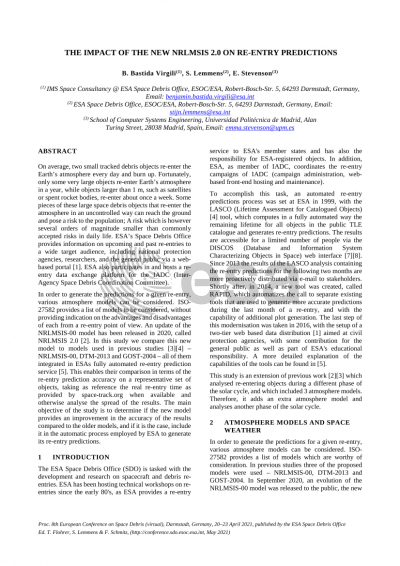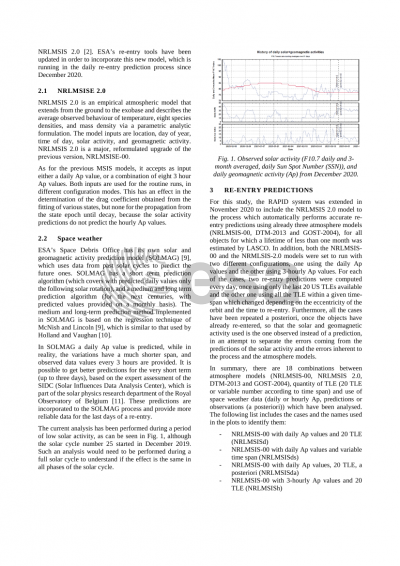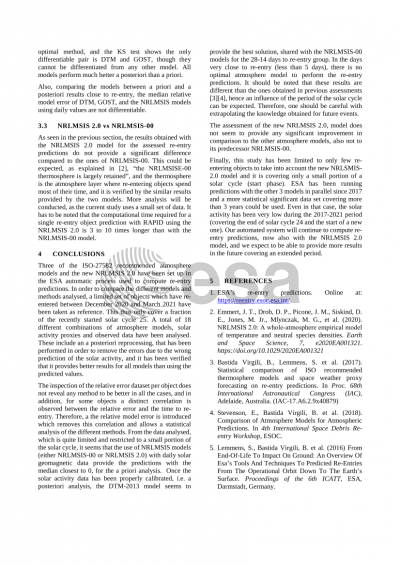Document details

Abstract
On average, two small tracked debris objects re-enter the Earth’s atmosphere every day and burn up. Luckily, only a few very large objects re-enter Earth’s atmosphere in a year, while objects above 1 m, such as satellites or spent rocket bodies, re-enter about once a week. Some pieces of these large space debris objects that re-enter the atmosphere in an uncontrolled way can reach the ground and pose a risk to the population; A risk which is however several orders of magnitude smaller than commonly accepted risks in daily life. ESA’s Space Debris Office provides information on upcoming and past re-entries to a wide target audience, including national protection agencies, researchers, and the general public via a web-based portal. ESA also participates in and hosts a re-entry data exchange platform for the IADC (Inter-Agency Space Debris Coordination Committee).
In order to generate the predictions for a given re-entry, various atmosphere models can be considered. ISO-27582 provides a list of models to be considered, without providing indication on the advantages and disadvantages of each from a re-entry point of view. An update of the NRLMSIS-00 model has been released in 2020, called NRLMSIS 2.0. In this study we compare this new model to models used in previous studies – NRLMSIS-00, DTM-2013 and GOST-2004 – all of them integrated in ESAs fully automated re-entry prediction service. This enables their comparison in terms of the re-entry prediction accuracy on a representative set of objects, taking as reference the real re-entry time as provided by space-track.org when available and otherwise analyse the spread of the results. The main objective of the study is to determine if the new model provides an improvement in the accuracy of the results compared to the older models, and if it is the case, include it in the automatic process employed by ESA to generate its re-entry predictions.
Preview








